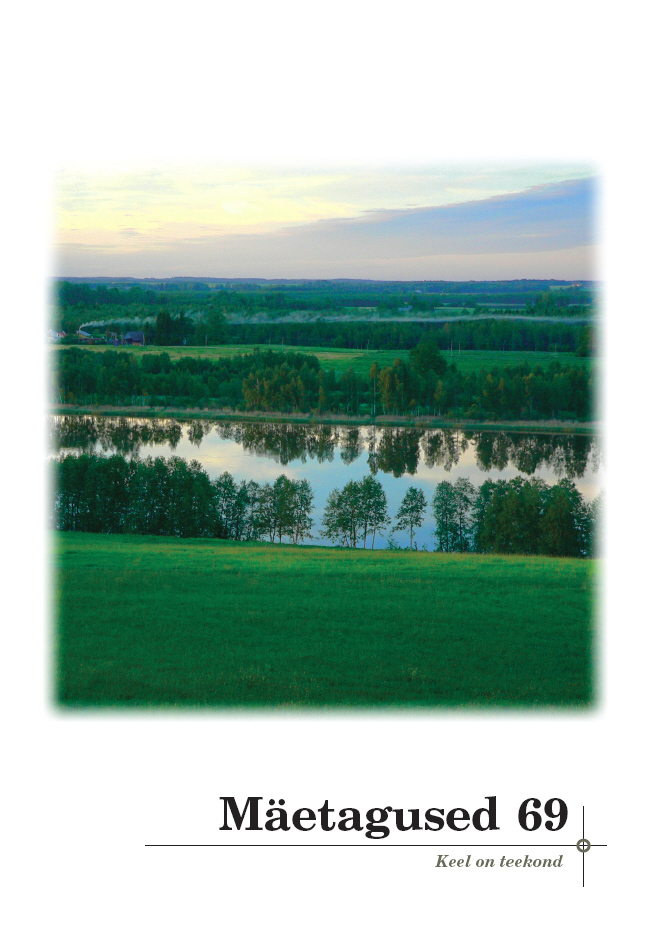Fraase laenamas: eestlaste ja soomlaste tõlkestrateegiaid
Loan idiom phrases: Estonian and Finnish translation strategies
Author(s): Pirkko Muikku-WernerSubject(s): Customs / Folklore, Theoretical Linguistics, Applied Linguistics, Cultural Anthropology / Ethnology, Culture and social structure , Translation Studies
Published by: Eesti Kirjandusmuuseum
Keywords: Estonian; Finnish; domestication; foreignisation; idiomatic phrases; translation
Summary/Abstract: Even rather similar proverbs and idiomatic phrases can have national nuances. They reflect the view of life and cultural reality typical for the nation in question. They give information about history, religion, manners, ethics, feelings, etc., of a country. However, the interaction between neighbours is a part of culture, and has contributed to cultural exchange. Because the ideas appearing in proverbs and phrases are in many respects universal, their globalisation happens naturally. Idiomatic phrases are challenging to translate because their meaning is not compositionally derived from their parts. This article demonstrates and compares the strategies that have been used for Estonian and Finnish (TL) in idiomatic phrase translations. The source languages (SL) are German and English. Two main translation strategies are presented: domesticating and foreignising. Domestication refers to the strategy in which the translator tries to reduce potential SL-specific elements by substituting them with corresponding TL-specific cultural elements. When using foreignisation as a strategy, translators refrain from making any changes, although cultural elements are divergent in the SL and TL, and they are retained in translations as close to the original as possible. The meaning of the idiom can be divided into two: the core meaning and additional meaning. Using this dichotomy helps, above all, to describe what kind of changes take place in the domesticating process. Idiomatic phrases carry a package of cultural values associated with the SL, and it is not an easy task to discover which culture-specific and language-specific features, and how, are translatable into the TL. In addition, idiomatic phrases can contain various more or less “poetic” elements, like uncommon words, exceptional word order, alliteration or rhyme. Transferring all these qualities to the TL is difficult but would contribute to maintaining the original expressive power, which is an important component of the idiomatic phrase in its native language. The results indicate that domestication strategies have a very important role in translation. Estonian and Finnish translators favour, for instance, substitution. They also add some expressive constituents like alliteration. Very old loan idioms are not domesticated. Particularly older people prefer established translations, even though they can encompass culturally unfamiliar elements. An interesting new phenomenon is direct, word-for-word translation. This kind of foreignising may be due to the speakers’ wish to show their English skills or their expertise. The use of this strategy stresses something special, like belonging to a certain in-group. There are some differences between Estonian and Finnish translations. Sometimes the Finnish translators advance further in the direction of the target language and culture than the Estonian ones. However, this solution seems to be arbitrary, not regular. Finns are keen on using a new calque translation which not necessarily adds to the intelligibility of the text. Some typically Finnish idiomatic phrases, popular especially among the young people, have not crossed the ocean. It would be very interesting to find out if the Finns living or studying in Estonia have absorbed local idioms.
Journal: Mäetagused. Hüperajakiri
- Issue Year: 2017
- Issue No: 69
- Page Range: 59-76
- Page Count: 18
- Language: Estonian

